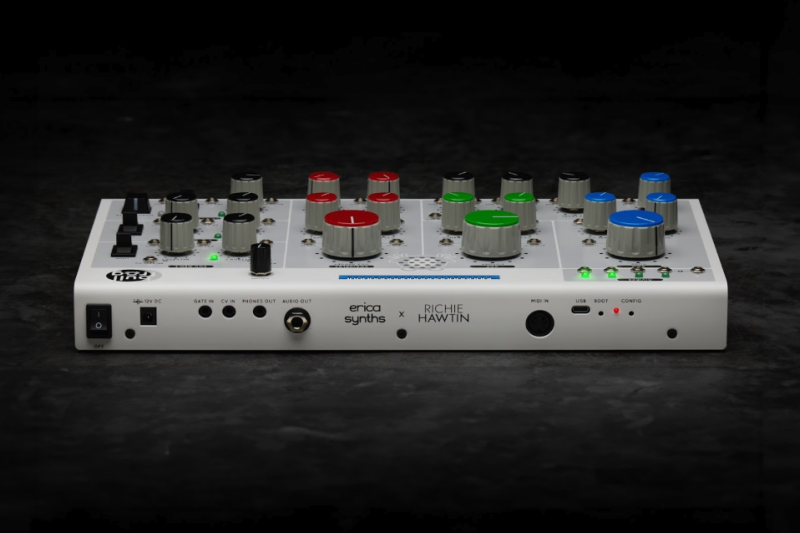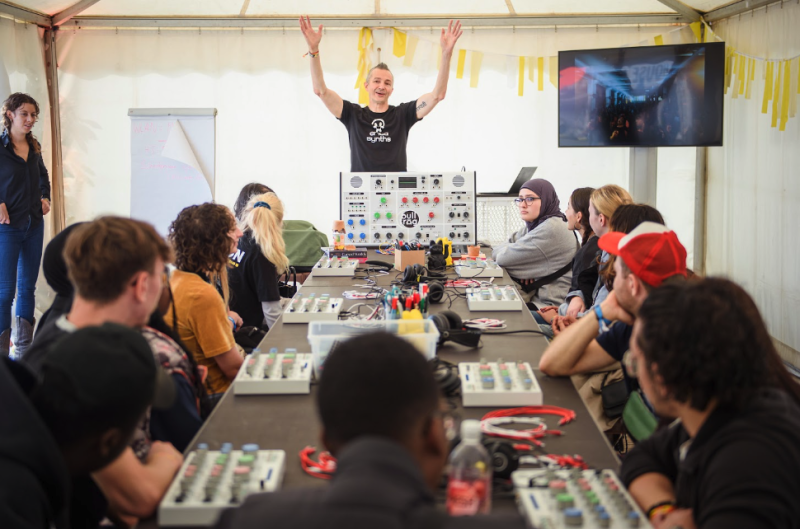The front of Bullfrog is a smorgasbord of dials with instant appeal to anybody who loves tweaking and the feel of hands-on analogue technology. There are three main sections: VCO, VCF, and VCA/Delay (corresponding to the three elements of sound: pitch, timbre, and amplitude). To the right of this are envelope generators and a Sample&Hold section, while at the top sits a blue cartridge socket. This is where the (included) voicecards slot in. Voicecards patch the internals of Bullfrog and quickly expand the sounds to create a variety of noises. The kit comes with three voicecards: an acid bassline, sampler-loopers (that can record and playback any sound), and a sequencer. There are also three blank voicecards that you can patch yourself by soldering the points together with wires.

To the rear are CV (control voltage) and MIDI (Musical Instrument Digital Interface) ports, phone and audio out, plus power sockets and config buttons. There’s a speaker set into the device itself, or you can use headphones.
Wired for sound
The 77-page manual is where things come to life. It walks you through sound generation, pitch, waveforms, overtones and harmonics, plus virtually every aspect of sound synthesis. Far more than just how to use the equipment, it covers the science behind sound. If there’s any criticism, it’s that it gets a little stuck in the weeds before getting you to patch together the components and start making noises. But this is nitpicking on what is a wonderful educational resource. Girts Ozolins from Erica Synths has made a YouTube video that explains the Bullfrog project that also includes a patching guide.
Taking things further
Bullfrog is more fun with a CV (controlled voltage) keyboard, and the manual mentions an Arturia Keystep or a MIDI keyboard. These enable you to turn the synthesized sounds into notes. It’s also possible to use Raspberry Pi to expand on the music abilities and learning. Either by using Pico to create a CV generator or by attaching a MIDI HAT to Raspberry Pi (see this OSA tutorial). Both of which could add programming aspects to this sound generator.

Erica Synths is using Bullfrog as an educational tool, and to that end has been running workshops using an XL version of the kit that also features an oscilloscope. They are hoping to get it into educational environments around the world.
Verdict
10/10
An innovative educational resource that takes you through sound creation and is a fully working subtractive synthesizer to boot. We loved testing this one out.
Specs
Features: Analogue design, 8-octave voltage controlled oscillator (VCO), voltage controlled amplifier (VCA), voltage controlled waveshapes with pulse width modulation (PWM, voltage controlled amplifier (VCA)
I/O: DIN5 MIDI input, USB connector, CV (controlled voltage), phones out, audio out
Voicecards: cid bassline, sampler-looper, sequencer, 3 × black voicecards are included








